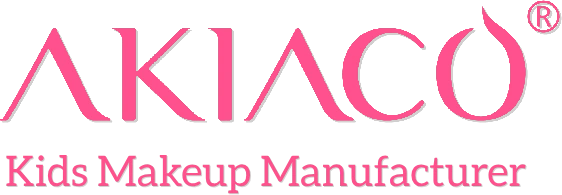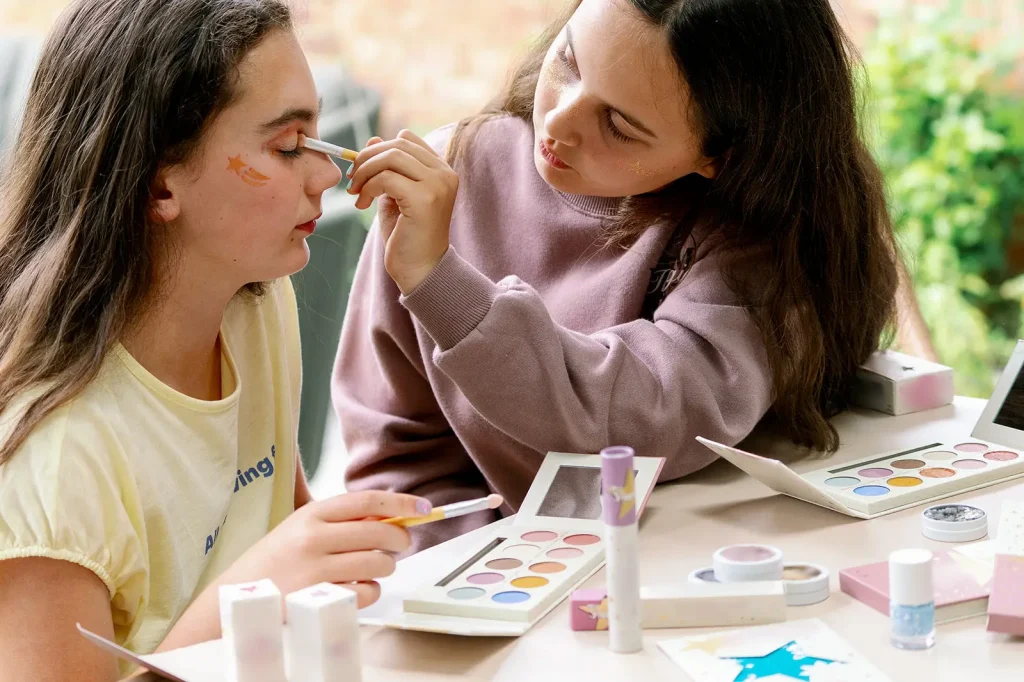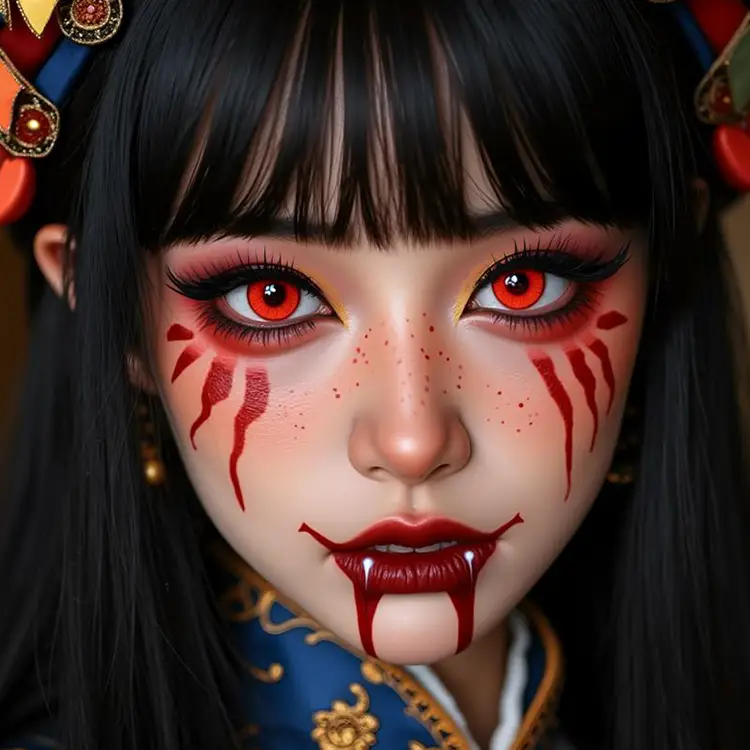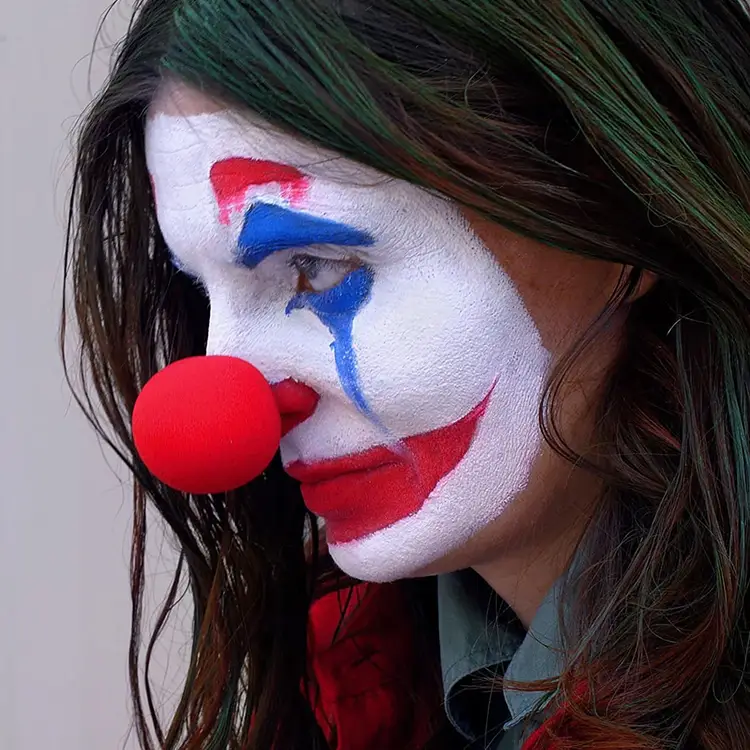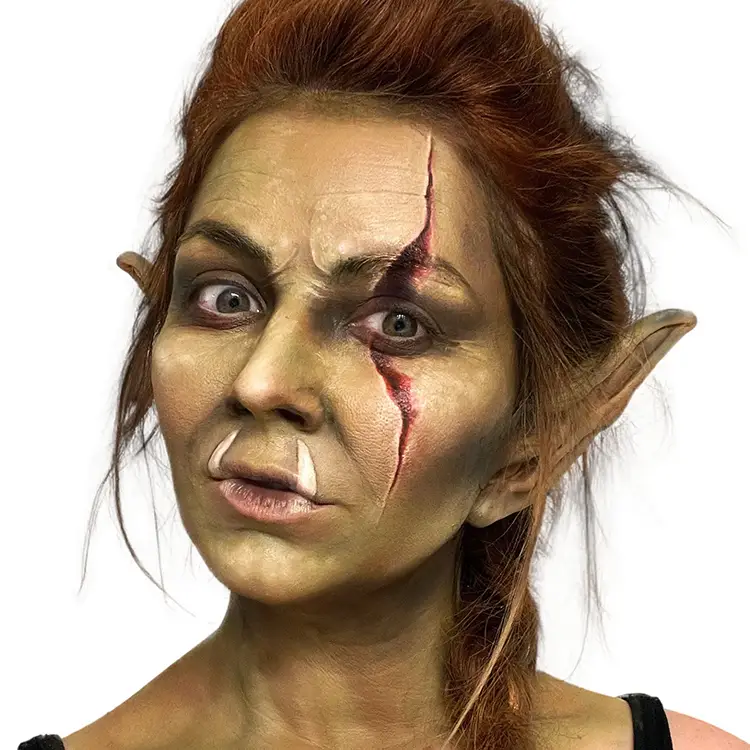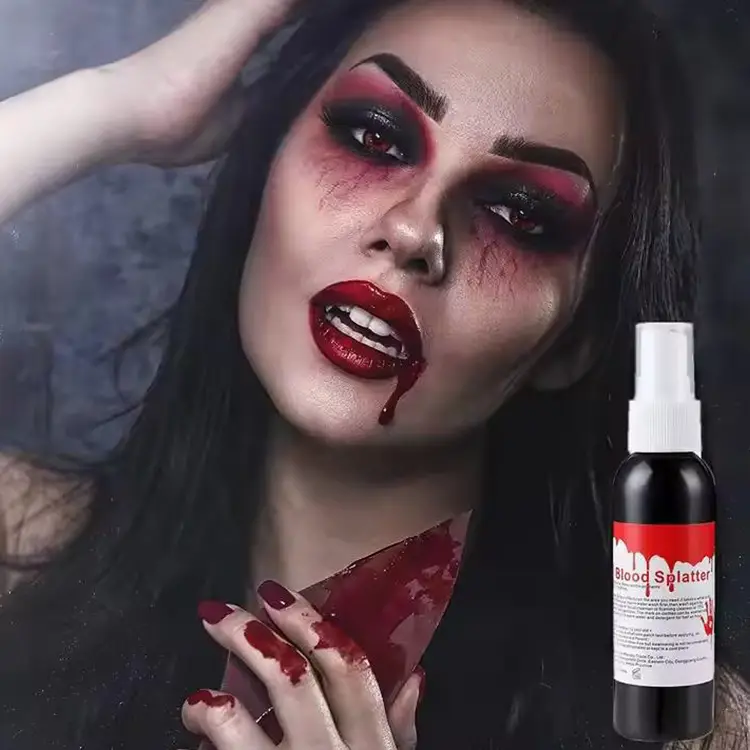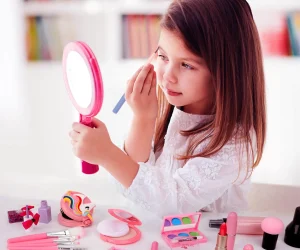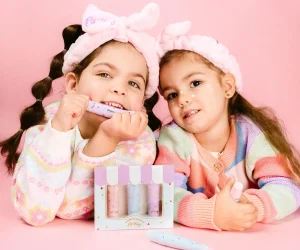DIY Halloween Makeup for Kids: Fun & Safe Ideas with Face Paint
Table of Contents
Understanding Face Paint and Kids’ Skin
Not all makeup is created for kids. What looks safe on shelves might not be safe on a child’s face. Kids’ skin has its own rules.
What Makes a Face Paint Kid-Safe?
Look for hypoallergenic and non-toxic labels. These terms mean the product is less likely to cause irritation or reactions. Avoid paints with strong scents or unknown colorants.
Safe face paints should also follow official rules. In the U.S., the FDA oversees cosmetic pigments. In Europe, it’s the EU Cosing list. Some brands follow ASTM D4236, which means the formula has been reviewed for use on skin.
Always check the label. If the paint says “for costume use only” or “not for skin,” don’t use it on kids—even for a quick touch-up.
How Kids’ Skin Reacts Differently Than Adults’
Children have a thinner skin barrier than adults. That means chemicals or dyes can pass through more easily. Their immune systems also react faster to foreign substances.
Some kids are sensitive to preservatives or color additives. Even fake blood can cause redness if it’s not made with gentle ingredients. Common signs include itching, dryness, or small bumps.
Don’t assume something is safe just because it says “natural.” Poison ivy is natural too.
Patch Testing and First-Time Use
Before painting a full zombie face, do a patch test. Dab a small amount of face paint behind the ear or on the inside of the arm. Wait 24 hours.
If you see redness, swelling, or itching, don’t use that product. Wash the area with gentle soap and water. If symptoms last, talk to a doctor.
This step might seem small, but it could save Halloween night from turning into a skin emergency.
Materials to Use and Avoid in Kids’ Halloween Makeup
Behind every spooky look is a list of ingredients. Some are fine. Others? Not so much. Knowing what’s safe in face paint, fake blood, or kids’ Halloween makeup can help avoid itchy surprises.
Safe Face Paint Ingredients
Most safe paints are either water-based or cream-based. Water-based dries fast and washes off easily. Cream-based is smoother but may smudge. Both are fine if made for skin.
Look for natural pigments from plants like beetroot or spirulina. Some face paints use iron oxides or titanium dioxide, which are considered low-risk when approved for cosmetics.
If you’re unsure, check the INCI list on the label or consult databases like EWG Skin Deep.
Ingredients to Avoid
Skip anything with added fragrance—even if it smells nice. Scents can cause rashes. Also avoid parabens, which are preservatives flagged in many safety studies.
Watch for heavy metals like lead or chromium, sometimes found in cheap face paints or imported kits. These don’t belong anywhere near a child’s face.
Be cautious with glitter and mica. Large glitter can scratch the skin or eyes. Choose cosmetic-grade mica only. Never use craft glitter in kids’ Halloween makeup.
Fake Blood for Kids: What’s Safe?
Not all fake blood is made for kids. Some theatrical products may contain dyes, alcohol, or thickeners that irritate young skin. Always choose face paint products or Halloween makeup labeled as safe for children and cosmetic-grade.
Avoid applying fake blood near the eyes or mouth unless it’s clearly marked as eye-safe or lip-safe. Kids may rub their face or even taste the product, so make sure the formula is gentle and approved for skin contact.
When in doubt, test a small amount on your child’s forearm before applying it to the face. Redness or itching means it’s time to try another brand.
Creative DIY Halloween Makeup Ideas for Kids
Kids often prefer face paint to full costumes. It’s lighter, more flexible, and easier to wear all night. With safe Halloween makeup, even young children can take part in the fun. All it takes is a bit of paint and a little imagination.
Classic Characters with Simple Face Paint
Pumpkins are a Halloween staple. Use orange face paint for the base and draw a black stem or smile with a soft brush. Ghosts are even easier—just white paint and big, spooky eyes.
Cats only need a little black paint for whiskers and a pink nose. For a simple skeleton, outline cheekbones and eyes with white and black. These designs are quick, but still make a big impact on trick-or-treat night.
Friendly Fantasy Looks
Some kids aren’t into spooky themes. Try turning them into a unicorn with pastel face paint, glittery stars, and a swirl of rainbow color across the forehead.
Rainbow fairies are all about shimmer. Use a soft sponge to blend purples, blues, and pinks. A space alien can be done with green and silver face paint, plus dots for a “galaxy” effect.
These fantasy characters let kids explore color while staying far from anything scary.
Spooky but Not Scary Ideas
A cute vampire look might use pale face paint and a small red line near the mouth to hint at “blood”—just enough for fun. A mini mummy can be made with light gray stripes and black-lined eyes.
For a child-safe Frankenstein, stick to green and black face paint. Draw stitches with a thin brush, but skip the scary teeth. Keep it playful.
These designs give a Halloween feel without overwhelming younger kids.
Using Stencils and Stamps
Face paint stencils make clean lines easier, especially for beginners. Kids often move around, and stencils help keep designs sharp even with a squirmy subject.
Use stamps or reusable silicone patterns for repeating shapes, like stars or bats. Just be sure they’re made from child-safe, washable materials.
Also, avoid pointed sponges or rough brushes. Look for soft applicators meant for face paint to reduce irritation on kids’ skin.
Step-by-Step Makeup Tutorial Examples
Face paint isn’t just about color—it’s about building a look that works for the child wearing it. These step-by-step Halloween makeup examples are short, safe, and fun. Perfect for a busy evening before trick-or-treating.
DIY Vampire Look
What You Need: Red, white, and black face paint. Soft sponge. Child-safe fake blood (FDA-tested). Wipes for cleanup.
How To Apply: Use white paint to lighten the face. Add black around the eyes and cheekbones. A bit of red under the mouth suggests blood without needing scary teeth.
Fake Blood Tip: Dab a tiny amount at the corner of the lip using a cotton swab. Avoid the mouth area unless the product is food-grade and clearly labeled for skin use.
To Remove: Wipe gently with warm water and a mild cleanser. Don’t scrub, especially near the eyes or lips.
DIY Cat Face
Basic Steps: Start with a clean, dry face. Use black face paint for the nose and whiskers. Add dots above the lips to mimic fur. Fill in a pink triangle on the nose tip.
Optional Touch: Draw soft cat ears on the forehead or use a headband with ears. Either works. This look is quick and doesn’t need glitter or extra layers.
DIY Zombie or Monster
Layering Paint: Use a sponge to dab on green or gray face paint. Don’t make it even—zombies aren’t polished. Add darker tones around the eyes and jawline.
Depth Effect: Mix blue and black paint lightly with a damp sponge. Tap instead of rubbing to give a bruised look. Add a fake scar or crack with a thin brush.
This kind of face paint gives texture without using prosthetics or glue.
Easy Wash-Off Ideas for Younger Kids
For toddlers or kids who won’t sit still, go simple. Try a heart on the cheek, a lightning bolt on the forehead, or a star near the eye.
These quick designs use just one or two colors of face paint and take under five minutes. No layering. No need to blend.
They’re also the easiest to clean off—just a wipe or a splash of warm water and they’re gone.
Application and Removal Tips
Good kids Halloween makeup doesn’t begin with paint—it starts with the skin. Proper prep and careful removal are just as important as the design itself. Here’s how to keep it safe, smooth, and simple.
Prepping the Skin
Always wash the child’s face first with warm water and a soft cloth. Pat dry.
Then, apply a light, unscented moisturizer or a kid-safe barrier cream. This keeps the face paint from sticking too tightly and helps with removal later.
Make sure hands are clean. Use only clean brushes, sponges, or applicators. Shared tools can transfer bacteria and cause rashes, especially on young skin.
How to Apply Face Paint Safely
Start with one thin layer of paint. Let it dry before adding more. This helps prevent cracking and keeps the paint from running.
Stay away from the eyes, nostrils, and mouth unless the product is tested for those areas. Most fake blood, for example, is not meant to go near mucous membranes.
If the child rubs or itches, pause. Remove the paint from that area and try again with less product or a different tool.
Gentle Removal Methods
Use soft baby wipes or cotton pads with warm water. Rub gently in circles.
If the face paint won’t come off, try a little oil-based remover or plain petroleum jelly. Let it sit for 30 seconds, then wipe away.
Avoid soap with strong scents. It can dry out or irritate the skin, especially after a long night of makeup and candy.
Post-Removal Skin Care
After cleanup, pat the skin dry. Then apply a basic fragrance-free lotion. No need for serums or masks.
Let the skin rest. If any redness or bumps appear, skip makeup for a few days and use a mild, pediatric moisturizer.
As one parent once said after a long Halloween, “The paint was fun, but bedtime was the real reward.”
Common Mistakes to Avoid
Not all Halloween makeup is created equal. When it comes to kids face paint, small oversights can lead to rashes, tears, or a ruined evening. These are the most common mistakes—and how to skip them.
Reusing Old or Expired Face Paint
Face paint has a shelf life. Many products last about 12 to 18 months once opened. After that, bacteria can grow—especially in damp storage.
If the paint smells odd, looks dry, or has changed color, toss it. It’s not worth the risk, even for “just a small design.” Check labels before every Halloween.
Using Adult Makeup Products
Adult makeup often contains perfumes, alcohol, or pigments not tested for kids’ skin. This includes many kinds of eyeliner, lipstick, and eyeshadow.
One mom once used red liquid lipstick for fake blood. Her son broke out in hives within minutes. Stick to face paint made for kids, labeled non-toxic and hypoallergenic.
Painting Directly on Dirty or Broken Skin
Never apply kids Halloween makeup to a face that hasn’t been cleaned. Dirt and oils block the paint from setting and may cause irritation.
Also avoid cuts, bug bites, or dry patches. Paint can sting or make things worse. Wait until the skin is fully healed, or choose a costume that uses masks instead.
Skipping a Patch Test
Even safe products can cause reactions. Always test a small dot of face paint or fake blood behind the ear or on the inner arm.
Wait 15 to 30 minutes. If there’s no redness, itching, or bumps, you’re probably good to go. It’s one step, but it could save the whole night.
Teaching Kids About Makeup Safety
Kids Halloween makeup isn’t just about fun. It’s also a good time to teach kids a bit about skin, hygiene, and healthy habits. Think of it as a soft intro to personal care.
Turning Makeup into a Learning Activity
Let kids help with mixing colors or choosing designs. While doing this, explain how face paint is different from real makeup or fake blood used in movies.
One dad told his daughter why the sponge needs to be clean—”like using a clean spoon, not the dog’s.” She got it. Keep it simple and honest.
Hygiene and Sharing Awareness
Kids often share paint brushes or sponges without thinking. But that’s how germs spread—especially around eyes and mouths.
Show them how to wipe tools clean. Let each kid use their own set if possible. Even siblings should avoid double-dipping. This habit may stick with them longer than face paint.
Explaining the Importance of Removal
Makeup removal is boring for kids. But it matters. If kids fall asleep with paint on, they might wake up itchy or break out the next day.
Teach them how to wash off paint gently using warm water or wipes. Make it part of the routine—like brushing teeth after candy. Even fake blood should never stay on overnight.
Environmental and Ethical Considerations
While creating fun and safe DIY Halloween makeup for kids, it’s also important to think about the impact on the environment and ethical choices. By using eco-friendly products and making mindful decisions, we can reduce waste and avoid harming animals.
Choosing Biodegradable or Eco-Friendly Paints
Face paints can be full of chemicals and synthetic materials that are harmful to both skin and the environment.
Choosing biodegradable or eco-friendly paints can help. These paints break down naturally without polluting the earth, making them a safer choice for your child and the planet.
Look for brands that highlight non-toxic ingredients and packaging made from recycled materials. Many eco-friendly face paints are also free from heavy metals like lead, which is crucial for your child’s safety. So, when buying face paint, check the labels for certifications like “cruelty-free” or “eco-friendly.”
Avoiding Glitter Pollution in DIY Makeup
Glitter is a common ingredient in Halloween makeup, but it comes with a big downside. Traditional glitter is made from plastic and can end up in the environment, where it contributes to pollution. Small particles like these can make their way into oceans and affect wildlife.
Instead of using traditional glitter, try biodegradable glitter. It’s made from plant-based materials and breaks down naturally. You can also make your own glitter from crushed seeds, dried flowers, or edible shimmer dust. This way, you can add sparkle without leaving a trail of pollution behind.
Vegan and Cruelty-Free DIY Options
Many commercial face paints are tested on animals, which is something many parents want to avoid. Fortunately, there are vegan and cruelty-free face paint brands available. These products don’t use animal-derived ingredients and ensure no animals were harmed during testing.
When selecting your DIY Halloween makeup, check for certifications such as “cruelty-free” or “vegan” on the packaging. This ensures that your makeup is not only safe for kids but also aligns with ethical practices.
Making these choices teaches children the importance of respecting animals and the environment.
Final Checklist for Halloween Makeup Prep
When preparing DIY Halloween makeup for kids, it’s important to ensure everything is ready and safe. Here’s a quick checklist to make sure you’re all set for a fun and worry-free experience.
- Safe face paint? ✅
The first step is to check that the face paint you’re using is safe. Look for non-toxic, hypoallergenic face paints that are specifically labeled for kids.
Many paints come in bright colors and are designed to be easy to remove. Be cautious of paints that contain harmful chemicals or heavy metals. Always verify the ingredients before application.
- Patch test done? ✅
Before applying face paint, especially on kids, it’s crucial to do a patch test. Apply a small amount of paint on the inside of the wrist or behind the ear and wait for about 10-15 minutes. If no irritation occurs, you’re good to go! This simple step ensures your child won’t experience an allergic reaction.
- Skin clean and prepped? ✅
Before starting the makeup, ensure that your child’s skin is clean and well-moisturized. Gently wash the face with a mild soap and water.
Applying a thin layer of moisturizer helps create a smooth surface for the face paint to go on evenly. Clean skin ensures better results and prevents any discomfort during removal.
- Materials clean and kid-safe? ✅
Check that all the materials you’re using are clean and safe. This includes brushes, sponges, and any tools like fake blood applicators.
Make sure they are thoroughly cleaned before use, as dirty materials can cause skin irritation. Opt for kid-friendly tools that are soft and gentle to avoid any discomfort.
- Removal plan ready? ✅
Lastly, have a removal plan in place. After the fun is over, use gentle baby wipes, oil-based removers, or warm water to safely remove face paint.
Always follow up with a gentle moisturizer to keep your child’s skin soft. Having this step planned ensures you can easily remove makeup without causing irritation or stress.
Conclusion
DIY Halloween makeup for kids can be a fun and creative way to celebrate, but safety should always come first. By choosing safe face paints, prepping the skin properly, and following the right removal steps, you can ensure a worry-free, enjoyable experience for both you and your child.
FAQ
Look for non-toxic, hypoallergenic face paints specifically designed for kids. These are usually water-based and easy to remove, making them a safe choice for delicate skin. Always check the ingredients to avoid any harsh chemicals or allergens, and choose face paints labeled as "safe for children."
It’s best to avoid adult makeup products for kids. These products may contain harmful chemicals that can irritate sensitive skin. Instead, opt for face paints that are designed for children, as they’re safer and formulated with kid-friendly ingredients.
To make face paint last, start with a clean, moisturized face. Allow each layer to dry before applying the next. Using a setting powder after painting can also help the makeup stay in place longer. However, try to avoid heavy sweating to prevent smudging.
While glitter can add a fun touch, be cautious. Regular craft glitter can be sharp and irritate the skin, especially around the eyes. Opt for cosmetic-grade glitter that’s designed for safe use on skin. Even then, avoid applying glitter near the eyes to prevent injury.
To remove face paint, use gentle methods like baby wipes or an oil-based remover. Warm water with a mild soap works well too. Be gentle to avoid irritating the skin, and always follow up with a moisturizer to keep the skin hydrated after removal.
